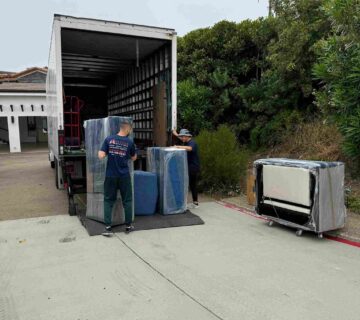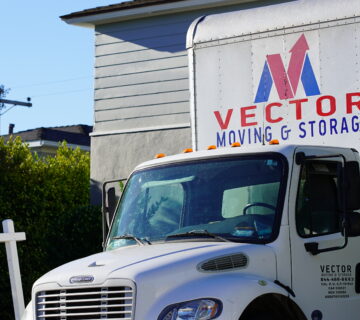The Ultimate Guide: How to Pack Your Kitchen for a Smooth Move
San Diego Movers San Francisco Movers
San Jose Movers Los Angeles Movers
Moving to a new home can be an exciting adventure, but it also comes with its fair share of challenges. One area that often causes stress during the moving process is packing the kitchen. With its abundance of fragile items, odd-shaped utensils, and bulky appliances, the kitchen requires extra attention and care. To help you pack your kitchen efficiently and safely, we have compiled this ultimate guide. Follow these tips to ensure a smooth and organized transition to your new home.
1. Start Early and Plan Ahead
Packing the kitchen is a time-consuming task, so it’s essential to start early and give yourself ample time to complete the process. Begin by creating a packing plan and gathering the necessary supplies, such as sturdy boxes, packing paper, bubble wrap, tape, and markers. Having everything on hand will save you time and frustration as you tackle the task.
2. Declutter and Organize
Before you start packing, take the opportunity to declutter your kitchen. Get rid of any broken or unused items, expired pantry items, and duplicate utensils. This will not only reduce the number of items you need to pack but also make unpacking in your new home easier. Consider donating or selling any items that are in good condition but no longer serve you.
3. Pack Non-Essential Items First
Begin by packing the items you rarely use or won’t need until after the move. This includes specialty appliances, seasonal cookware, and infrequently used utensils. Wrap fragile items, such as glassware and delicate china, in packing paper or bubble wrap. Use dividers or cardboard inserts to keep them separated and prevent breakage. Clearly label each box with its contents for easy identification later.
4. Pack Appliances with Care
When it comes to packing appliances, such as blenders, mixers, and toasters, make sure they are clean and dry before packing them. Remove any detachable parts and pack them separately. Use the original boxes and packaging materials, if available. If not, wrap each appliance in bubble wrap and secure it with tape. Place them in sturdy boxes, filling any gaps with packing paper or towels to prevent shifting during transport.
5. Protect Your Pots and Pans
To protect your pots and pans, stack them together and place packing paper or foam padding between each one to prevent scratches. If your cookware has lids, nestle them together or wrap them individually. Once stacked, place them in a box, placing heavier items at the bottom and lighter ones on top. Fill any gaps with crumpled packing paper to minimize movement.
6. Safeguard Your Knives
When it comes to packing knives, safety is paramount. Use blade guards or secure them with cardboard and tape to prevent accidents. Alternatively, wrap each knife individually in packing paper and place them in a separate box. Label the box as “Sharp Knives” to alert movers or anyone handling the boxes to exercise caution.
7. Secure Utensils and Small Items
Utensils and small kitchen items can easily become disorganized during the moving process. To keep them in order, sort them into categories, such as measuring spoons, spatulas, and serving utensils. Bundle each category together using rubber bands or zip ties. Place them in sealable bags or small boxes, labeling them accordingly. Consider using a utensil tray or dividers to keep everything organized and protected.
8. Pack Fragile Items Strategically
Fragile items, such as wine glasses, ceramics, and delicate dishes, require extra care. Wrap each piece individually in packing paper or bubble wrap, securing it with tape. Place them upright in a sturdy box, using crumpled packing paper or bubble wrap to fill any gaps. Avoid overpacking the box to prevent breakage. Clearly mark the box as “Fragile” and “This Side Up” to ensure careful handling during the move.
9. Label and Create an Inventory
As you pack each box, label it with its contents and the room it belongs to. This will help movers or friends assisting you to know where each box should go in your new home. Additionally, create an inventory list detailing the contents of each box. This will serve as a handy reference when unpacking and help you identify any missing items.
10. Essential Box for Immediate Use
Pack a separate box with essential items that you’ll need immediately upon arrival at your new home. This may include plates, utensils, coffee maker, basic cooking supplies, and cleaning products. Label it as “Open First” and keep it easily accessible during the move. This way, you’ll have what you need without having to dig through multiple boxes right away.
Final Thoughts
Packing your kitchen for a move doesn’t have to be overwhelming. With careful planning, organization, and attention to detail, you can ensure a smooth and successful transition. By following these tips, you’ll be well on your way to a stress-free move and an efficiently unpacked kitchen in your new home. Remember, if you prefer professional assistance, Vector Moving and Storage is here to help. Our experienced movers can pack your kitchen and handle every aspect of your move, ensuring a seamless experience from start to finish.





